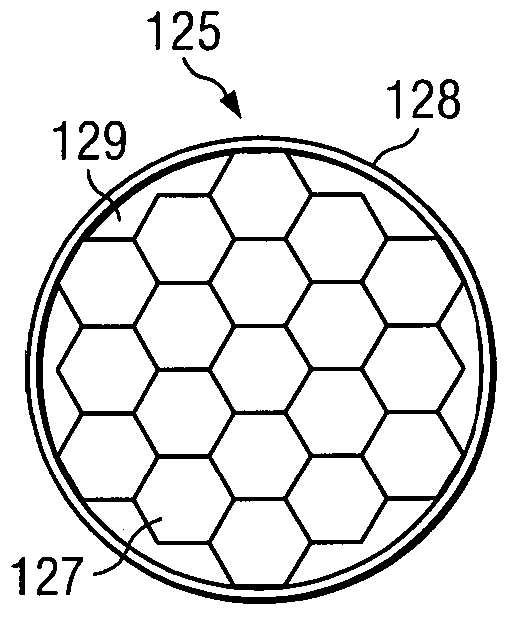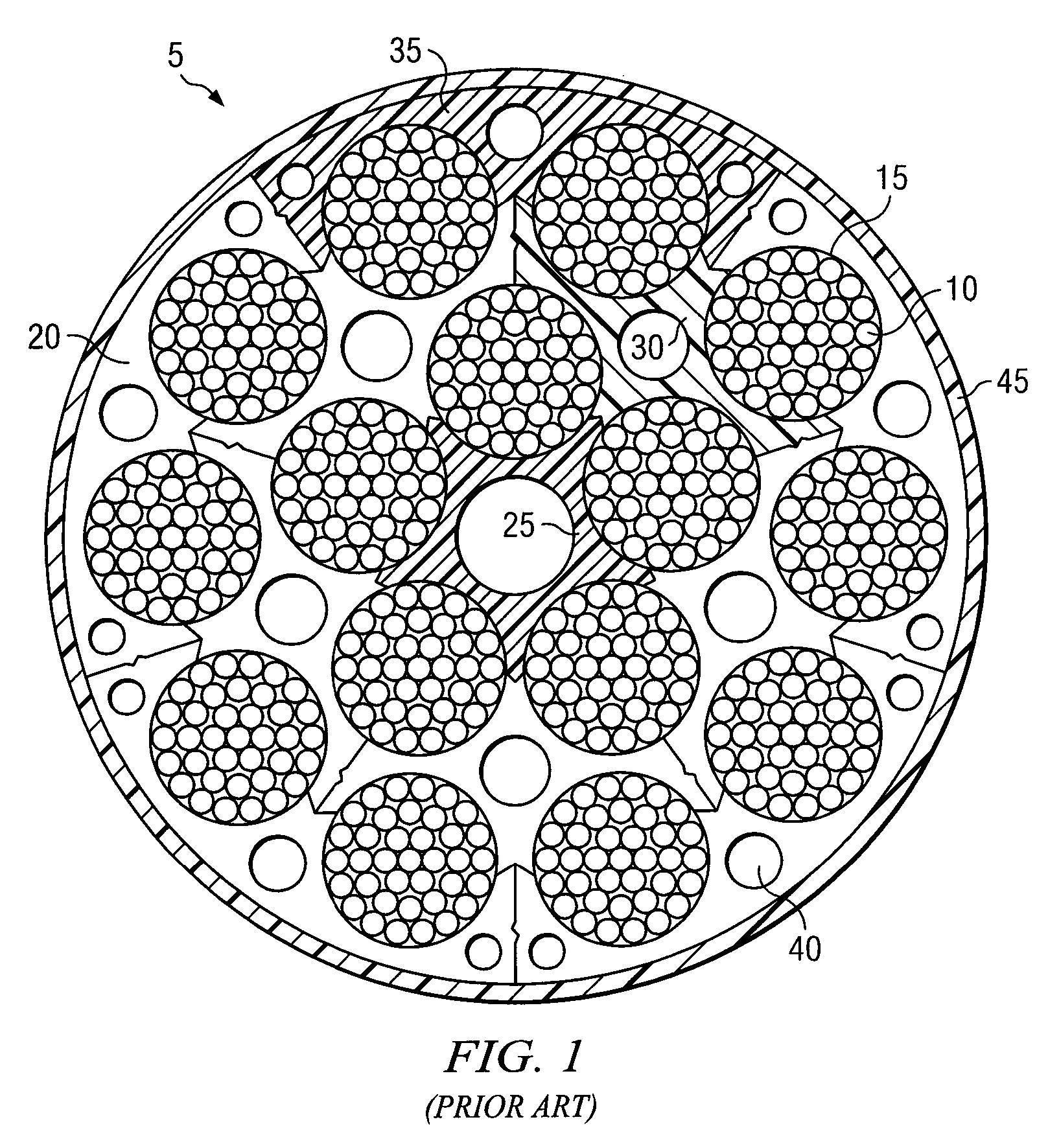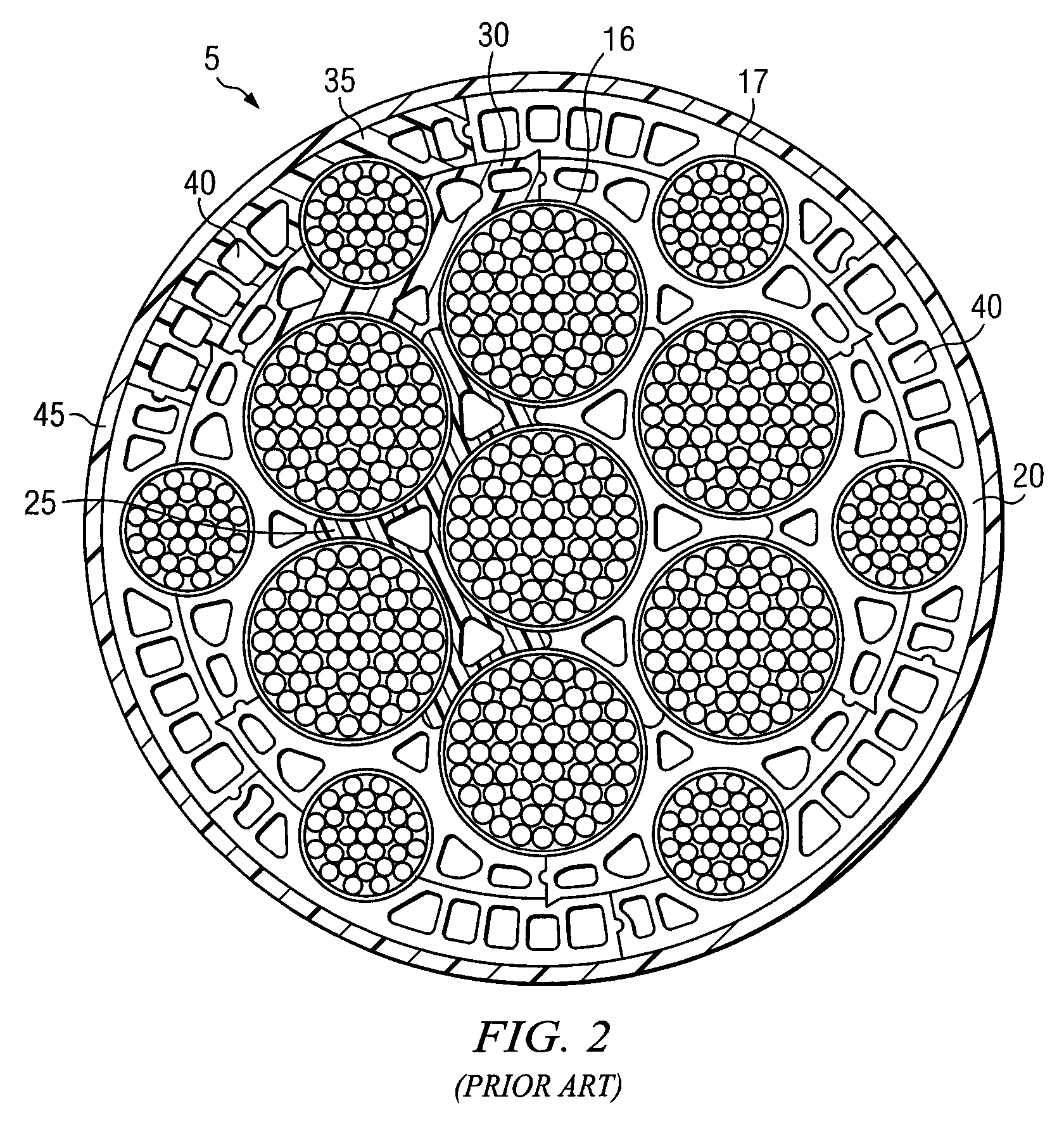Composite tether and methods for manufacturing, transporting, and installing same
a composite tether and tether technology, applied in the field of composite tethers, can solve the problems of limited attempts to maximize tether stiffness, impracticality of spool size, and inconvenient use of spools, so as to increase the buoyancy of non-twisted tethers, facilitate handling and transportation, and increase the buoyancy
- Summary
- Abstract
- Description
- Claims
- Application Information
AI Technical Summary
Benefits of technology
Problems solved by technology
Method used
Image
Examples
example
[0048] The following example is a comparison of the dimensions of a conventional, spoolable composite tether identified as round tether A with two nontwisted tethers, each of which is produced in accordance with this invention, identified as square tether NS-1 having a plurality of solid rectangular rods and round tether NS-2 having a plurality of solid circular rods.
[0049] Two important parameters for sizing a tether in response to a given load and to provide the needed stiffness are the total cross-sectional area of the composite rods in the tether and the elastic modulus of the rods. In general, if the elastic modulus of the composite rod is increased (thus increasing the stiffness of the composite), the required cross-sectional area of the composite that is carrying the load is reduced. The total cross-sectional area of the rods that is carrying the load is equal to the cross-sectional area of each rod times the number of rods. Stated alternatively, the number of rods required ...
PUM
| Property | Measurement | Unit |
|---|---|---|
| diameter | aaaaa | aaaaa |
| diameter | aaaaa | aaaaa |
| depths | aaaaa | aaaaa |
Abstract
Description
Claims
Application Information
 Login to View More
Login to View More - R&D
- Intellectual Property
- Life Sciences
- Materials
- Tech Scout
- Unparalleled Data Quality
- Higher Quality Content
- 60% Fewer Hallucinations
Browse by: Latest US Patents, China's latest patents, Technical Efficacy Thesaurus, Application Domain, Technology Topic, Popular Technical Reports.
© 2025 PatSnap. All rights reserved.Legal|Privacy policy|Modern Slavery Act Transparency Statement|Sitemap|About US| Contact US: help@patsnap.com



